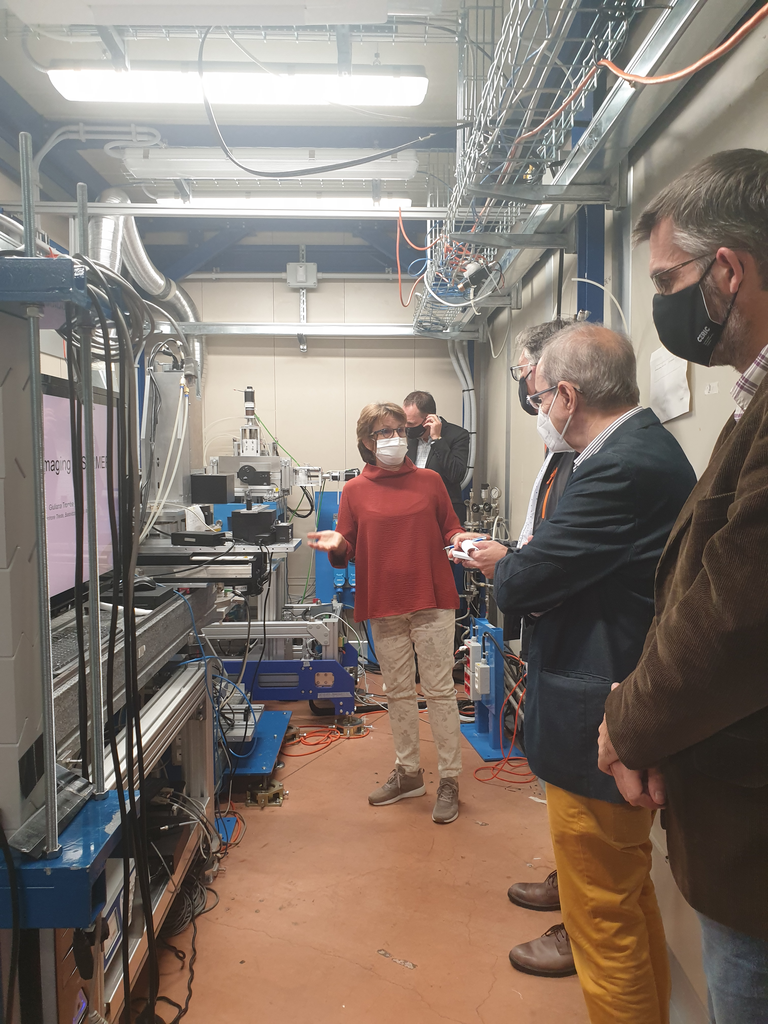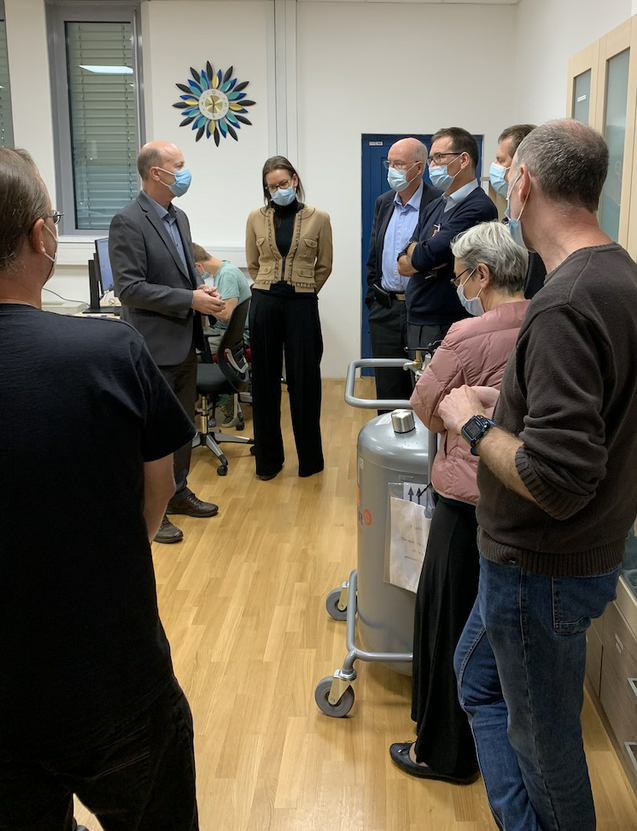ISTAC periodical evaluation of the Italian and Slovenian CERIC Partner Facilities
On October 5th, the members of the International Scientific and Technical Advisory Committee – ISTAC of CERIC, performed the periodical evaluation of the Italian and Slovenian partner facilities (PFs) of the Consortium.
At both facilities, the ISTAC positively assessed the quality of the scientific activities and of the contribution to CERIC strategic objectives and access capabilities, and provided recommendations to further improve the services for the scientific community.
At the Italian PF at Elettra Sincrotrone Trieste, Karsten Horn, Christoph Quitmann, Paolo Olivero and Luis Fonseca, were welcomed by Ornela De Giacomo – Deputy Director of CERIC, and M arco Marazzi – Deputy General Coordinator of Elettra and member of the CERIC Board of Directors.
arco Marazzi – Deputy General Coordinator of Elettra and member of the CERIC Board of Directors.
The scientific output of the Italian PF has been considered very good, as witnessed by the quality of publications, including high-impact journals. Between 2017 and 2020, the PF produced 89 scientific articles deriving from CERIC scientific transnational-access activities. They were published in peer-reviewed, ISI listed journals, with an average Impact Factor of 5,4. Another sign of scientific quality is the fact that users from 33 countries were attracted, and chose Elettra over other international competitors.
The prompt response of the facility to the pandemic was also positively noted: operation and experiments continued via remote access, and the COVID fast-track access proposals have already led to significant results.
In their evaluation report, the Committee of Evaluators (CoE) recognised that Elettra is consistently making the most out of CERIC actions. Specific examples are the success in the PhD programme and the internal research grants.
More generally, the Italian PF has been profiting from CERIC initiatives in strategic areas such as battery research, including contributions from other countries, enabling instrumentation and techniques to be developed, and boosting collaboration across facilities and with leading groups. These activities will strengthen Elettra in general and, with it, the impact of the science it enables.
Several upgrades made possible by CERIC were mentioned and first effects (new partnerships, data and even publications) are apparent. One important example is the participation in the PANOSC project ,which is limited to pan-European RIs, and which will make the power of the European Open Science Cloud (EOSC) available to CERIC, although the CoE recommended further progress in providing FAIR data.
At the Slovenian PF, the Slovenian NMR Centre at the National Institute of Chemistry in Ljubljana, Andrew Harrison, Michel Van der Rest, Annalisa Pastore, Guy Schoehn performed the evaluation in presence of the Director of the Slovenian NMR Centre, Janez Plavec, and the CERIC Executive Director, Jana Kolar.

The Committee of Evaluators has been highly impressed by the achievements of the PF so far, as well as by the quality and commitment of the staff, as also shown by the outcomes of the periodical surveys on users’ satisfaction, whereas the quality of the outputs has been assessed as scientifically excellent.
The impact of participation in CERIC is evidenced by the following:
- The high number and quality of publications by the users (34 scientific articles in peer-reviewed, ISI listed journals, with an average Impact Factor of 7,11), mostly involving the PF’s staff as co-authors, which demonstrates the high level of engagement and scientific support to the users.
- The participation in proposals to the Framework Programme through CERIC.
- The fact that the number of papers per unit usage time has doubled, demonstrating the benefits of the open access programme for the productivity of the PF.
- The increase in the share of instrument time of the Slovenian PF, which has almost tripled since 2017, demonstrates that the PF appreciates the value-added brought by the open access scheme through CERIC.
It was noted that past recommendations have been mostly taken up. These include: the increase of personnel dedicated to CERIC; infrastructure investments, which have been accomplished with the addition of three new NMR spectrometers to the offer, and with the upgrade of the existing ones; the further development of the life sciences and materials sciences domain.
-
12.04.2024
Call for Executive Director
-
12.04.2024 | call for proposals, Research
20th Call for Proposals: an overview



